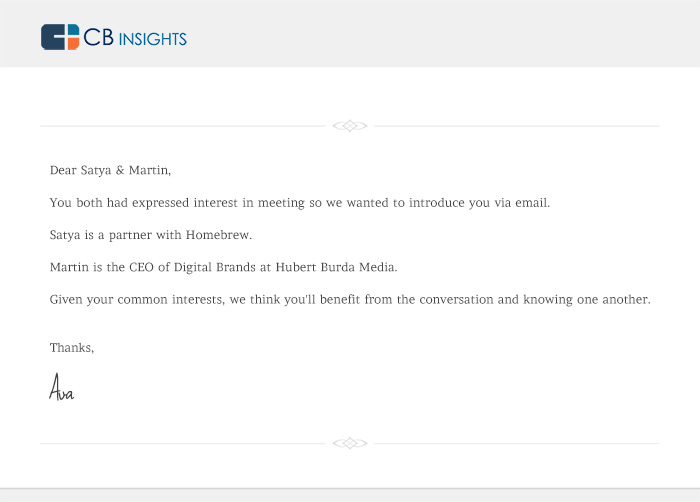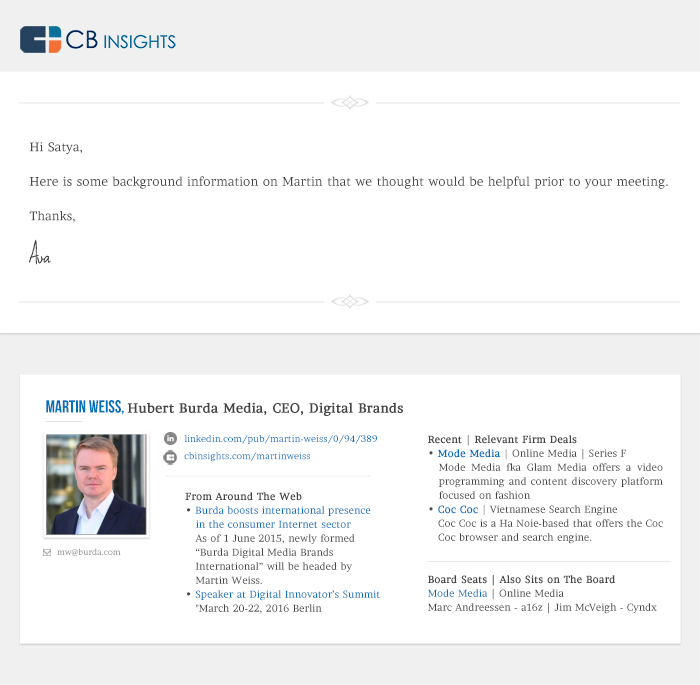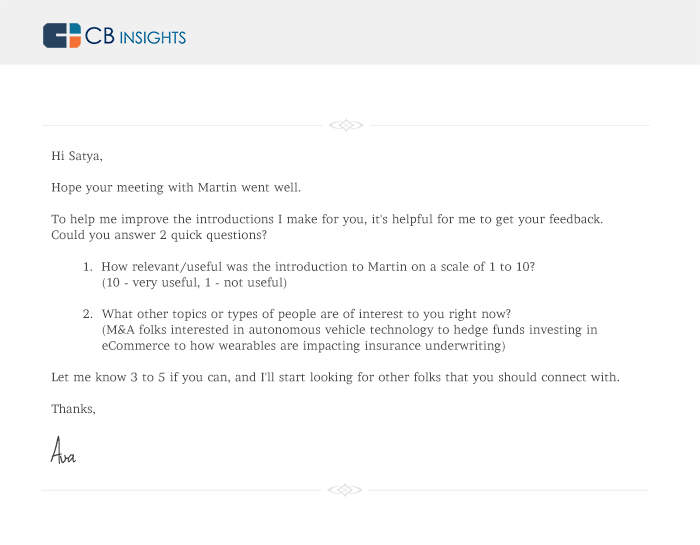Today, we’re excited to unveil Ava, an AI-driven networking assistant who will give our clients an unfair advantage in building their future professional network.
What’s an “AI-driven networking assistant?” and, for that matter, what is your “future professional network?” you ask.
We’ll explain.
But first, let’s talk about Bloomberg.
For a while, we’ve been fascinated with the idea of an Instant Bloomberg for the global private markets. Instant Bloomberg is the collaboration and chat application that brings together Bloomberg’s clients so they can exchange ideas and find trading partners.
But as we thought about it and talked to our customers, we realized the instancy of chat wasn’t appropriate or necessary. Private markets don’t move nearly as quickly as the public markets.
So, while a communication layer in the private markets would be valuable, speed was less important than the ability to drive connections among the right people.
Because in the private markets, personal networks are what drive success. Having a better personal network means getting access to deals, industry intelligence, rumors and emerging trends before your competition.
As a result, we knew that helping our clients build the right network was going to be key in our pursuit of the “Instant Bloomberg” for the global private markets.
But we weren’t sure how to do it.
And then…
We drank too much wine
CB Insights regularly hosts client dinners. We bring together a high quality group of folks usually centered around a theme such as fin tech or auto tech or corporate VC and do this over some good food and drink.
It was at these dinners that we saw two recurring questions emerge:
-
Clients who were not located in the geography of the event asked us how they could participate or if they could get introduced to relevant folks who attended.
-
Attendees often left the evening asking us “Can you introduce me to someone who knows about X?” or “someone who invests (acquires, purchases technology) in Y?”
The data says you should know this person
Based on these requests, we’d go back to our data and see if we could find people they should know based on their firm and individual interests.
Based on this data, we’d make introductions.
People loved these.
Using data, we could help them find sources of dealflow, buyers of their technology, potential acquirers or co-investors who they didn’t even know existed. Sometimes these would be people in their backyard that they could go meet in person, and other times, they’d be people from halfway around the world.
We realized that we could use data to show our clients very precisely who they should know — their future professional network. And doing this gives them the advantages that come from having a better network: access to deals, market intelligence, rumors and emerging trends.
Having done this many times on a one-off basis, we began to think about how to do this more frequently and enable incredibly productive, targeted networking opportunities.
And Ava was born
Our goal was to take the manual effort involved in these post-dinner introductions and do them at scale. As a result, we started building an AI-driven solution to identify who you should know, introduce you and then get feedback to make better introductions in the future.
This AI-driven tool has become Ava, our clients’ virtual networking assistant.
Unlike professional social networks that help you inventory the people you already know, Ava highlights the people you should know.
How Ava works
Ava uses a number of signals — from board relationships and recent acquisitions to press releases and blog posts — about an individual and their firm to build a professional interest graph for each individual. It then looks for others who have similar interests and then makes introductions.
Ava first identifies two individuals who should know each other. In this case, it has identified that Martin Weiss of Hubert Burda Media and Satya Patel of VC firm Homebrew should know each other.
First, a double blind email intro is sent by Ava to both parties to confirm both parties are interested in an introduction. Assuming both parties say yes, here is the email Martin would initially receive. Satya would receive a similar one. In the event that both parties do not agree to an introduction, no action is taken.
Assuming both parties respond positively to the networking suggestion made by Ava, each would be introduced to each other via email as follows.

To help each person get familiar with the other prior to their meeting, Ava sends a summary profile of the other person with relevant links, board affiliations, recent deals, etc. The goal here, beyond the initial introduction, is for Ava to provide them context on the person they are going to be meeting/speaking with.

After the introductions are made, Ava reaches out to get feedback on the introduction and to get more input on each person’s areas of interest. This helps ensure future introductions are increasingly relevant.
Stay tuned for more from Ava.



